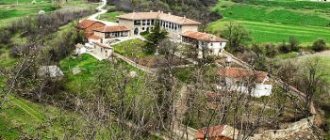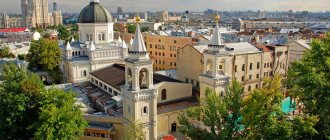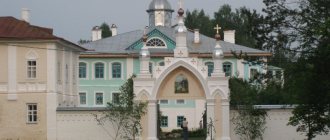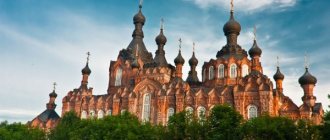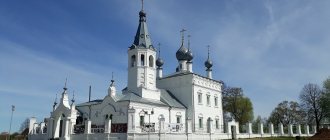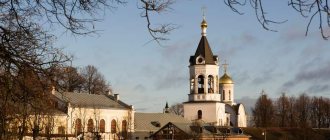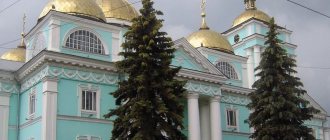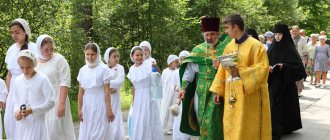Mir
Russia Moscow Simonov Monastery (Moscow) Map is loading...
{"format":"leaflet","minzoom":false,"maxzoom":false,"limit":50,"offset":0,"link":"all","sort":[""], "order":[],"headers":"show","mainlabel":"","intro":"","outro":"","searchlabel":"\u2026 \u0441\u043b\u0435\ u0434\u0443\u044e\u0449\u0438\u0435 \u0440\u0435\u0437\u0443\u043b\u044c\u0442\u0430\u0442\u044b","default":"","import-annotation":false,"width ":"auto","height":"350px","centre":{"text":"","title":"""link":"""lat":55.71376939999999677866071579046547412872314453125,"lon": 37.65659720000000021400410332717001438140869140625,"icon":""},"title":"","label":"","icon":"","lines":[],"polygons":[],"circles":[ ],"rectangles":[],"copycoords":false,"static":false,"zoom":8,"defzoom":14,"layers":["OpenStreetMap"],"image layers":[] ,"overlays":[],"resizable":false,"fullscreen":true,"scrollwheelzoom":true,"cluster":false,"clustermaxzoom":9,"clusterzoomonclick":true,"clustermaxradius":80, "clusterspiderfy":true,"geojson":"","clicktarget":"","showtitle":true,"hidenamespace":false,"template":"","userparam":"","activeicon": "","pagelabel":false,"ajaxcoordproperty":"","ajaxquery":"","locations":[{"text":"\u003Cb\u003E\u003Ca href=\"/palomnik/%D0% A1%D0%B8%D0%BC%D0%BE%D0%BD%D0%BE%D0%B2_%D0%BC%D1%83%D0%B6%D1%81%D0%BA%D0%BE% D0%B9_%D0%BC%D0%BE%D0%BD%D0%B0%D1%81%D1%82%D1%8B%D1%80%D1%8C_(%D0%9C%D0%BE%D1 %81%D0%BA%D0%B2%D0%B0)\» title=\»\u0421\u0438\u043c\u043e\u043d\u043e\u0432 \u043c\u0443\u0436\u0441\u043a\u043e\u0439 \ u043c\u043e\u043d\u0430\u0441\u0442\u044b\u0440\u044c (\u041c\u043e\u0441\u043a\u0432\u0430)\»\u003E\u0421\u0438\u043c\u043e\ u043d\u043e\u0432\ u043c\u0443\u0436\u0441\u043a\u043e\u0439 \u043c\u043e\u043d\u0430\u0441\u0442\u044b\u0440\u044c (\u041c\u043e\u0441\u043a\u0 432\u0430)\u003C/a\ u003E\u003C/b\u003E\u003Chr /\u003E\u003Ca href=\»/palomnik/%D0%A1%D0%B2%D0%BE%D0%B9%D1%81%D1%82%D0%B2% D0%BE:%D0%90%D0%BD%D0%BD%D0%BE%D1%82%D0%B0%D1%86%D0%B8%D1%8F\» title=\»\u0421\u0432 \u043e\u0439\u0441\u0442\u0432\u043e:\u0410\u043d\u043d\u043e\u0442\u0430\u0446\u0438\u044f\u003E\u0410\u043d\u043d\u043e \u0442\u0430\u0446\ u0438\u044f\u003C/a\u003E: \u0432 \u043f\u0440\u043e\u0448\u043b\u043e\u043c \u043e\u0434\u0438\u043d \u0438\u0437 \u0441\u0 430\u043c\u044b\u0445\u043a \u0440\u0443\u043f\u043d\u044b\u0445 \u0438 \u0431\u043e\u0433\u0430\u0442\u044b\u0445 \u043c\u043e\u043d\u0430\u0441\u0442 \u044b\u0440\u0435\u0439 \u0431 \u043b\u0438\u0436\u0430\u0439\u0448\u0435\u0433\u043e \u041f\u043e\u0434\u043c\u043e\u0441\u043a\u043e\u0432\u044c\u044f. \u041e\u0441\u043d\u043e\u0432\u0430\u043d \u0443\u0447\u0435\u043d\u0438\u043a\u043e\u043c \u0438 \u043f\u043b\u0435\u043c \u044f\u043d\u043d\u0438\u043a \u043e\u043c \u043f\u0440\u043f. \u0421\u0435\u0440\u0433\u0438\u044f \u0420\u0430\u0434\u043e\u043d\u0435\u0436\u0441\u043a\u043e\u0433\u043e \u2014 \u0441 \u0432\u0442. \u0424\u0435\u0434\u043e\u0440\u043e\u043c \u0432 1370-\u0445 \u0433\u0433. \u043d\u0430 \u0437\u0435\u043c\u043b\u044f\u0445, \u043a\u043e\u0442\u043e\u0440\u044b\u0435 \u043f\u043e\u0436\u0435\u044 0\u0442\u0432\u043e\u0432\ u0430\u043b \u0431\u043e\u044f\u0440\u0438\u043d \u0421\u0442\u0435\u043f\u0430\u043d \u0412\u0430\u0441\u0438\u043b\u044c\u 0435\u0432\u0438\u0447\u0425\ u043e\u0432\u0440\u0438\u043d","title":"\u0421\u0438\u043c\u043e\u043d\u043e\u0432 \u043c\u0443\u0436\u0441\u043a\u043e\u0439 \u0 43c\u043e\u043d \u0430\u0441\u0442\u044b\u0440\u044c (\u041c\u043e\u0441\u043a\u0432\u0430)”,”link”:””,”lat”:55.71376939999999677866071579046547412 872314453125,"lon":37.65659720000000021400410332717001438140869140625,"icon" :""}],"imageLayers":[]}
55.713892; 37.65717
Russia, Moscow, Vostochnaya street, 4
Moscow
Russia
Telephone:
(8 (495) 675-21-95
Email:
Simonov Monastery
- in the past one of the largest and richest monasteries in the nearest Moscow region. Founded by the student and nephew of St. Sergius of Radonezh - St. Feodor in the 1370s. on the lands donated by boyar Stepan Vasilyevich Khovrin. In the XVI-XVII centuries. was part of the belt of fortified monasteries that protected the approaches to Moscow from the south. The vast majority of the buildings were demolished in the 1930s; The area is partially built up. Currently, the refectory is being restored, the outbuildings and the fraternal building are being used as workshops; the surviving walls and towers are in an abandoned state. Currently, there is a parish church of the Tikhvin Icon of the Mother of God on the territory of the monastery.
History[edit]
The monastery was founded downstream of the Moskva River from Moscow by the disciple and nephew of St. St. Sergius of Radonezh - St. Fedor, a native of the city of Radonezh on the lands that were donated by the boyar Stepan Vasilyevich Khovrin, who accepted monasticism with the name Simon, from which the name of the monastery comes. The monastery later maintained contact with the Khovrin (Golovin) family; here was the tomb of his representatives.
It was believed that the monastery was founded in 1370. Modern researchers attribute the foundation to 1375-1378 or to the spring-autumn of 1377.
In 1379 the monastery was moved to its current location; In the same place (in Old Simonovo), the Church of the Nativity of the Virgin Mary was preserved, in which in the 18th century the burials of the heroes of the Battle of Kulikovo - Alexander Peresvet and Andrei (Rodion) Oslyabi were discovered, which have survived to this day.
The Monk Sergius of Radonezh considered the Simonov Monastery to be a “branch” of his Trinity Monastery and always stayed here during his visits to Moscow. Famous church figures emerged from the walls of the Simonov Monastery: St. Kirill Belozersky (1337-1427), Metropolitan Jonah, Patriarch Joseph, Metropolitan Gerontius, Archbishop John of Rostov. In the 16th century, the famous figure of non-covetousness, the monk Vassian, and the theologian Maxim the Greek lived and worked in the monastery.
Over the long years of its existence, the Simonov Monastery was raided more than once and was devastated during the Time of Troubles.
In former times, the monastery was one of the most famous and revered in the immediate Moscow region; A huge number of people and rich material deposits flocked here. The monastery was especially loved by Tsar Fyodor Alekseevich (the elder brother of Peter I), who had his own cell here for solitude.
In 1771, the monastery was abolished by Catherine II and, due to the spreading plague epidemic at that time, it was turned into a plague isolation ward. Only in 1795 was it restored to its religious capacity through the petition of Count Alexei Musin-Pushkin. At the same time, its first rector was Archimandrite Ignatius (Ushakov), who was transferred from the Great Tikhvin Monastery of the Novgorod diocese.
After the establishment of Soviet power in 1920, the monastery was again abolished. In 1923, a museum was established in the monastery, which existed until 1930. The director of the museum, Vasily Ivanovich Troitsky (1868-1944), established relations with the church community: he allowed services in one of the monastery churches in exchange for the provision of watchmen and janitors at the expense of the community. In the 1920s, the architect S.K. Rodionov carried out restoration of the monastery buildings.
In January 1930, a government commission recognized that some of the ancient buildings on the territory of the monastery could be preserved as historical monuments, but the cathedral and walls should be demolished. Five of the six churches were demolished, including the Assumption Cathedral, the bell tower, the gate churches, as well as the Watchtower and Tainitskaya towers with their adjacent buildings. During the working cleanups, all the walls of the monastery were dismantled, except for the southern one, and the cemetery was also abolished. On the site of the demolished buildings, the ZIL Palace of Culture was built in 1932-1937.
In the early 1990s, the remains of the monastery buildings were transferred to the church.
Abbots
- St. Theodore (1370 - 1386)
- St. Gerontius (mentioned 1447 - 1453)
- Niphon (1482 - 1484)
- St. Vassian (Sanin) (ca. 1502 - 1506)
- John (1514 - February 9, 1520)
- Philotheus (1560 - 1562)
- Paul (September 1612 - August 1613)
- Levky (1620 - July 6, 1634)
- Joseph (Dyakov) (1639 - 1642)
- Paul (May 1671 - September 15, 1674)
- Rafail (Krasnopolsky) (beginning 1704 - 1708)
- Joseph (Turoboysky) (1708 - 1710 [1])
- Dorofey (Korotkevich) (1710 - 1712)
- Kirill (Florinsky) (? - July 1741)
- Pavel (Ponomarev) (November 27, 1783 - October 13, 1785)
- Apolloniy (Matveevsky) (1851 - 1861)
- John (Metropolitan) (March 26, 1881 - August 12, 1889)
- Andrey (Sadovsky) (1889 - 1893)
- Alexander (Zakke-Zakkis) (April 16 - September 3, 1893)
- John (Kratirov) (March 12, 1903 - December 5, 1908)
- Misail (Krylov) (December 4, 1908 - ?)
- Philip (Perov) (not earlier than 1912 - 1917)
- Jacob (Pyatnitsky) (1921 - March 1922)
- Peter (Rudnev) (1923 - 1927 [2])
…
…
…
…
…
Current state[edit]
Currently, only a small part of the buildings of the Simonov Monastery has been preserved:
- the southern wall with three towers: the corner “Dulo” (four battle tiers, a stone tent, a two-tier observation tower), the pentagonal “Kuznechnaya” and the round “Salt”.
- “New” refectory with the Church of the Holy Spirit (1677-83; architect O. Startsev),
- fraternal building of the 17th century, “old” refectory (1485, 17th century),
- workshop chamber,
- outbuilding - “malting room” or “drying room”.
On the territory of the monastery there is a parish church of the Tikhvin Icon of the Mother of God.
The refectory is being restored, outbuildings and the fraternal building are being used as workshops; the surviving walls and towers are in an abandoned state.
At the temple:
- there is an amateur group of sign songs and performances;
- spiritual Sunday conversations are held with people with hearing and vision disabilities;
- On the territory of the temple, classes of the group of anonymous alcoholics "Chance" and the group of anonymous drug addicts "Vostok-4" are held.
Simonov: the most formidable and most forgotten monastery in Moscow
Simonov Monastery. Wojciech Weiss
I came to the Simonov Monastery to interview a man who organized a unique community of deaf-blind, deaf-mute and hard-of-hearing Christians. She will turn 25 this year. Even before the conversation with Archpriest Andrei Goryachev, the rector of the Church of the Tikhvin Icon of the Mother of God of the Patriarchal Compound in the Simonov Monastery, I was a little lost. We had to go around all the surviving walls of the ancient monastery. I want to share what I learned, saw and heard.
Towers and walls of the Simonov Monastery
Almost nothing remains of the former grandeur and grandiose plan, which was embodied over centuries - only three red brick towers. They have large cracks and need urgent restoration. The tent, renovated in the early 2000s, further emphasizes the neglect of the ancient walls: the tiles are new - the brick is kept on its word of honor.
The “salt” tower is the first thing that catches your eye if you walk along East Street. It is covered with ancient tiles. Since tsarist times, the tent of the “Salt” tower has not been updated. The tower is connected by a massive southern wall to the other two. All these are the remains of the most powerful outpost in the south of Moscow.
Simonov Monastery in the first half of the 18th century.
From behind the walls, dilapidated, shapeless buildings of the industrial zone and warehouses appear. But it's on the other side. And on this one there is a neat park with a children's playground and paths. On the site of a former cemetery.
I stop at another tower – “Kuznechnaya”. She is the smallest. Pentagonal. Such a small hulk. Apparently, they wanted to renovate it a couple of years ago. But the liquid scaffolding seems to soon collapse on its own. It, like the round “Salt”, was built by the architect Konstantinov in the 1640s. At this time, the monastery was actively rebuilt: the defensive structures that had been damaged during the Time of Troubles were strengthened.
The panorama of Moscow from the high and steep bank is still impressive. It is no coincidence that the tallest bell tower in Moscow was erected here. We can now appreciate the view from the fifth tier of the famous and lost belfry only from old photographs.
View from the bell tower of the Simonov Monastery
I approach the most powerful of the survivors - the Dulo tower. It was erected by the “sovereign master” Fyodor Savelyevich Kon. “Dulo” is the nickname or name of the Tatar leader. He was killed by an arrow fired from this tower.
Fyodor Savelyevich also built walls. The height of the southern wall, preserved by some miracle, in some places reaches 7 meters. But what remains is rather a quiet greeting from the past.
The Dulo tower has 16 sides. The horse built on a grand scale and to last. The ribs of the tower are decorated with blades. They give the majestic structure a harmonious appearance. This is to speak in the language of a historical reference book. And to put it as it is, the entire tower, despite its majesty, is slowly settling and falling apart.
The ruined Simonov Monastery
The walls of the monastery held the defense more than once, exhausted the enemy and were the first to meet enemy fire. And there were enough enemies
But let us be fair and careful in our conclusions: the walls and towers of the Simonov Monastery are a real masterpiece of Russian fortification thought. They held the defense more than once, exhausted the enemy and were the first to meet enemy fire. And there were enough enemies. In 1591, the Simonov Monastery took part in repelling the attack of Khan Kazy-Girey. In the fall of 1606, the monastery prevented, and quite unsuccessfully, the advance of Ivan Bolotnikov’s troops. In 1610–1613 it was ruined – “almost to the ground” – by Polish-Lithuanian invaders and fell into disrepair. And in 1812 the monastery suffered from the French. Then the temples and sacristy were looted, and precious manuscripts were lost.
French army at the walls of the Simonov Monastery
But in the 20th century, the monument, huge in design and by construction standards, was almost destroyed... by their own people.
The length of the monastery walls was 825 meters, the height was 7 meters. To summarize: in the modern architectural ensemble of the monastery, three towers have been preserved: “Dulo”, “Kuznechnaya” and “Solyana”.
Deep history in superficial strokes
And it all began in 1370. The student and nephew of Sergius of Radonezh, Theodore, founded the Simonov Assumption Monastery. The location for the future monastery was chosen on a picturesque hill located downstream of the Moscow River. These lands were donated by boyar Stepan Vasilyevich Khovrin. When he was tonsured, he received the name Simon - hence the name of the monastery. But this is just a version.
A whole galaxy of ascetics and patriarchs emerged from the walls of the monastery: St. Kirill of Belozersky, St. Ferapont of Mozhaisk. There were also St. Jonah, Metropolitan of Moscow and All Rus', St. Gerontius, also a metropolitan, and Patriarch Joseph... By the way, Jonah became the first metropolitan installed in Rus' without the Patriarch of Constantinople. This happened in 1448. And of course, one cannot help but say that the first Patriarch of Moscow and All Rus', Job, came out of the Simonov Monastery.
It is noteworthy that some inhabitants of the Simonov Monastery came here by the will of the sovereign. Around 1510, by direct royal decree, Vasily Kosoy Patrikeev (monastically Vassian)1 was appointed to the monastery. And of course, the famous Maxim the Greek lived here.
It was in the Simonov Monastery that St. Kirill heard the voice of the Mother of God, who ordered to go to Beloozero
The first on this list, Saint Cyril, heard the voice of the Mother of God in the Simonov Monastery. And a miracle happened like this. He became the archimandrite of the Simonov Monastery, but soon left his abbotship and secluded himself in a cell. One night, while listening to the akathist, he heard the voice of the Mother of God: “Kirill, get out of here and go to Beloozero. There I have prepared a place for you where you can be saved.”
Simonov Monastery was one of the richest in Rus'. Until 1764, he owned about 12 thousand peasants. Several small monasteries and deserts were assigned to the monastery.
Plan of the Simonov Monastery
It is known that Patriarch Filaret in 1624 wrote a decree to Grigory Vasilyevich Zamytsky in Ostashkov: he demanded that the peasants of Rozhkovskaya Sloboda, the estate of the Simonov Monastery, be allowed to fish in Lake Seliger. The document says that this practice existed before, and the quitrent was paid to the order of the Grand Palace2.
Fishing by the peasants of the Simonov Monastery in Lake Seliger for rent did not suit the Ostashkovsky (apparently, the sovereign) peasants, therefore the Simonovsky peasants were forbidden to fish in the lake3. This conflict of interest happened four centuries ago.
Even in the Simonov Monastery, Peter the Great’s elder brother, Fyodor Alekseevich, had his own cell. And the famous collector of manuscripts and Russian antiquities, Count Alexei Musin-Pushkin, petitioned Catherine II in 1795 to have the Simonov Monastery reopened after its abolition due to the plague that had decimated the population. So the plague isolation ward was again turned into a monastery.
In past centuries, these landscapes and this area attracted great writers, great poets and famous artists.
Simonov Monastery at the beginning of the 18th century.
In a pond that was located not far from the monastery, Nikolai Karamzin drowned his Lisa. Apollinary Vasnetsov worked here and Konstantin Ton worked here. Alexander Pushkin was also here, but this is a sad story, which will be discussed below...
High classic and luxurious baroque
The ensemble of the Simonov Monastery was finally formed by the middle of the 19th century. But already in 1685, the famous Moscow architect Osip Startsev built the famous Refectory Chamber in the monastery.
The Tikhvin Church, opened today, is that same refectory.
Initially, the architect Parfen Petrov took on the work of its construction. But the customer did not appreciate the master’s work: he did not like the motifs of ancient Moscow architecture. It came to court. Three years later, another architect, Osip Startsev, remade what Petrov had built and created the most impressive monument of the Moscow Baroque in its form and scope.
The architect gave free rein to his imagination and built a spacious observation deck. In size it was not inferior to the large quadrangle of the church. And here is what Mikhail Yuryevich Lermontov wrote about this architectural solution:
Northern facade of the Tikhvin Church
“Further to the east, on three hills, between which the river meanders, there are wide masses of houses of all possible sizes and colors; a tired gaze can hardly reach the distant horizon, on which groups of several monasteries are depicted, between which Simonov is especially notable for his hanging platform, almost between heaven and earth, from where our ancestors watched the movements of the approaching Tatars.”4
Another bold architectural solution has survived to this day - the stepped gable.
The northern façade was decorated with windows with intricately shaped frames. This can be seen from the photographs that have reached us. But another bold architectural solution has survived to this day - the stepped gable. Its design is in the spirit of Western European mannerism.
The above-mentioned Apollinary Vasnetsov depicted just the described part of the building on the canvas “Simonov Monastery. Clouds and golden domes." This is 1927. Barely made it.
Vasnetsov A.M. Simonov Monastery. 1927
Even in black and white, everything is fabulously beautiful. And this is what the Tikhvin Church looked like with the famous gables during the Soviet years.
Tikhvin Temple destroyed
And Western European mannerism, which miraculously penetrated beyond the thick fortress walls of the Simonov Monastery, has brilliant examples in Florence. Take, for example, the wonderful Laurentian Library. It was built by Michelangelo with his students Giorgio Vasari and Bartolomeo Ammanati. The echo of that wave in architecture is now frozen on the roof of the Tikhvin Church. So until the end, by the way, and not restored. In this sense, it is not far from its sister towers.
The famous bell tower of the Simonov Monastery was less fortunate. More precisely, no luck at all. And this five-tier bell tower was erected in 1839 by Konstantin Ton. They say he loved Simonov very much. The bell tower was 9 meters (and according to some sources, 12) higher than “Ivan the Great”. Designed in the Russian-Byzantine style, it became the highest in Moscow: 90 meters. The Simonov Monastery has turned into a real architectural pearl.
Simonov Monastery in bloom
Now one can only imagine what kind of ringing rang over the bend of the Moscow River when the monks called people to worship. By the way, the largest bell weighed more than 1000 poods - that’s 16 tons. The atheists removed this colossus and melted it down. But even old photographs convey the grandeur of the bell tower. There's a lot to see. This, for example, is her very first photograph. It was made in 1852.
The first photograph of the bell tower of the Simonov Monastery. 1852
The bell tower will be blown up and dismantled into bricks. And then they will destroy the necropolis
And here is an old postcard of the Simonov Monastery. The author is the artist-engraver Louis-Pierre-Alphonse Bichebois... Louis-Pierre-Alphonse, by the way, perfectly understood and appreciated beauty and scale. Thanks to his work, we know how the Alexander Column was raised on Palace Square in St. Petersburg.
L. Bichebois. Simonov Monastery. 1846
The bell tower will be blown up and dismantled into bricks. And in a year the famous monastery necropolis will be destroyed.
Buried necropolis
My soul told me long ago: You will rush through the world like lightning! You are given to feel everything, But you will not enjoy life.
These are the lines of the wonderful Moscow poet Dmitry Venevitinov. He died at 21. But he managed to become a great romantic.
Dmitry Venevitinov
In 1826, Venevitinov wrote a brilliant poem in which we find the lines:
This is the hour of final suffering! Listen: the will of a dead man is terrible, like the voice of divination. Pay attention: do not remove this ring from a cold hand; - Let my sorrows die with him and be buried with him.
Venevitinov’s “will” was not fulfilled. There really was a ring. More precisely, a ring from Herculaneum. It was given to the dying poet by the Slavophile Alexei Khomyakov. Alexander Sergeevich Pushkin also came to his funeral at the Simonov Monastery. After a “lightning-fast” life, Dmitry Vladimirovich’s ashes were disturbed. The terrible “will of a dead man” was violated in 1930. The ring was taken and is now kept in the Literary Museum.
Red Army soldiers take out the property of the Simonov Monastery at a subbotnik
The ashes of Sergei Timofeevich Aksakov, the author of “The Scarlet Flower,” were also disturbed. The bodies of both writers were exhumed and reburied at the Novodevichy cemetery. But Venevitinov’s relatives were less fortunate. Their graves were destroyed. Like hundreds of others. They were not moved. All the remains were mixed with earth. Class enemies - representatives of the old noble Russian families: Zagryazhskys, Olenins, Durasovs, Vadbolskys, Soimonovs, Muravyovs, Islenevs, Tatishchevs, Naryshkins, Shakhovskys, who were buried here - were not needed by the new Bolshevik “Russia”. And under the foundation of the library of the ZIL House of Culture there is the burial place of an associate of Peter the Great, the first holder of the Order of St. Andrew the First-Called - Fyodor Golovin. This House of Culture was built on the foundation of the five-domed Assumption Cathedral of the Simon Monastery.
Along with the tombstones, the Assumption Cathedral and other churches disappeared forever - before the revolution, there were six churches with 22 altars in the monastery - the Watchtower, and Taininskaya.
The arrival of the deaf-blind and mute and the new life of the Simonov Monastery
The Simonov Monastery began to come to life in the 90s of the last century. Thanks to the enormous energy and superhuman efforts of Archpriest Andrei Goryachev, rector of the Church of the Tikhvin Icon of the Mother of God. He began to restore both the destroyed monastery and the lost necropolis.
Temple in honor of the Tikhvin Icon of the Mother of God today
A major examination has already been carried out to separate human and animal remains: the bones were randomly scattered throughout the monastery and covered with earth and construction debris. After a short tour of the monastery, Father Andrei and I went down to the Musin-Pushkin tomb. Valentin Platonovich, a relative of the same Alexei Ivanovich Musin-Pushkin, who persuaded Catherine II to open the Simonov Monastery. Valentin Platonovich built two two-story chapels of the temple.
Alexey Ivanovich Musin-Pushkin
Another tombstone with the surname “Tolokonnikov” caught my eye. Made of black granite. It, like hundreds of others, lay underground for 60 years. And right opposite the entrance to the Tikhvin Church there are several more gravestones. Apparently, so that the memory does not fade.
People with disabilities come here to worship services: some cannot hear, and some cannot see and hear at the same time
I came to the Simonov Monastery to talk with Father Andrei Goryachev about the deaf-blind community. People with disabilities have been coming here for services for more than 20 years: some cannot hear, and some cannot see and hear at the same time. And there is a very strong community here.
After the interview, Father Andrei gave a short tour of the temple. The interview itself about the unique arrival of deaf-blind people will appear later. First, I wanted to introduce readers to this amazing place, where the walls, towers and temple that have miraculously survived to this day are ready to tell many stories. I would like to listen to them.
Pilgrim[edit]
Simonov Monastery invites Orthodox pilgrims to take part in divine services and venerate the shrines.
Schedule of services:
Daily divine services (lunch service), starting at 9.00.
On Friday, Saturday and Sunday – Divine Liturgy, starting at 9.00.
On the eve of the twelve and great holidays, on the days of especially revered saints and revered icons, an akathist is read, beginning at 16.00, on the day of the holiday - the Divine Liturgy, beginning at 9.00.
The service is conducted simultaneously by voice and gestures without the accompaniment of a choir.
Telephone:
(8 (495) 675-21-95
Website:
https://hram.deafnet.ru/
Email:
Used materials
- “Simonov Monastery” // Russian Orthodoxy website
- Moscow. Simonov Monastery // “People's catalog of Orthodox architecture”
- “Simonov Monastery” // Library of the site “Museum of Frescoes of Dionysius”
- Mikhail Vostryshev “Orthodox Moscow. All the temples and chapels."
[1] Evgeniy (Bolkhovitinov), Metropolitan. Historical dictionary. About the writers of the clergy of the Greek-Russian Church who were in Russia, M: Trinity Sergius Lavra, 1995, p. 172.
[2] Lyudmila Kulikova. " True to the oath." On the history of the martyrdom of Archbishop Peter (Rudnev)
. Based on materials provided by Fr. Alexander Yakovlev, priest. Ascension Cathedral in Velikiye Luki // Orthodox online newspaper “Blagovest” (Samara):
Description of the architecture
The monastery complex included:
- Assumption Cathedral. The 15th century iconostasis was decorated with icons by Maxim the Greek and Andrei Rublev. The temple was dismantled in 1930;
- Bell tower. It was erected in the 16th century and included two chapels - Archangel Michael and St. Nicholas the Wonderworker. It was rebuilt, after which the mentioned chapels were abolished. Destroyed by the Bolsheviks;
- Spasskaya Church above the Holy Gates. It was built at the end of the 16th century in memory of the victory over the horde of Kazy-Girey. In the 19th century, renovation work was carried out in it, as a result of which a new iconostasis was installed and the dome was gilded;
- Church of the Descent of the Holy Spirit. It was a two-story temple with one dome;
- Church of the Tikhvin Icon of the Mother of God;
- the gateway Church of the Sign of the Blessed Virgin Mary on the eastern side;
- a new refectory designed by Osip Startsev;
- fortress wall with towers. The monastery had five towers. There were gates on four sides - Meadow, Western, Side, Water;
- necropolis with burials of representatives of the nobility.
Towers of the Simonov Monastery
In the past, a powerful outpost had long fortress walls and 5 towers. Of these, only 3 towers (Dulo, Kuznechnaya, Solevaya) and part of the walls survived.
It is believed that the Forge and Salt towers were built according to the design of the architect Antip Konstantinov in the 17th century. The blacksmith tower is pentagonal and has a stone tent covered with red tiles. The salt tower is a nineteen-sided structure with arched niches with lower and middle battlements.
Dulo gives the impression of being the strongest and most powerful of the towers. Its authorship is attributed to the architect Fyodor Kon. According to one version, its name comes from the name or nickname of the Tatar leader, killed by an arrow fired from the tower. It has 16 sides, its ribs are decorated with shoulder blades, they make the tower look slender.
Dulo Tower, © Maxim Ershov
Temples of the Simonov Monastery
By the beginning of the 20th century, there were 6 temples with 22 altars on the territory. The first to appear was the Assumption Cathedral, its iconostasis was painted by Maxim the Greek and Andrei Rublev. The richness of the temple’s decoration can be judged by the surviving gilded Royal Doors, which are now on display in the Hermitage. The architectural ensemble of the monastery included the Spasskaya Church, the Church of the Descent of the Holy Spirit, the Church of the Sign of the Blessed Virgin Mary and other religious buildings.
Only the Church of the Tikhvin Icon of the Mother of God, erected at the refectory of the Simonov Monastery in 1677, has survived to this day. Divine services are held there regularly. The temple has 4 chapels (Tikhvin Icon of the Mother of God, St. Theodore Archbishop of Rostov, St. Sergius of Radonezh, All Saints) and the baptismal church of St. Alexander of Svir. Among the shrines of the temple are a measuring list from the miraculous Tikhvin Icon of the Mother of God, icons of the patrons of the Simonov Monastery, “Healing the Deaf and Mute,” “Softening Evil Hearts,” and Simonov saints.
Schedule of services on the official website of the Church of the Tikhvin Icon of the Mother of God
Walls of the monastery tower, © Maxim Ershov
Shrines and patronal feasts
Among the revered Orthodox shrines of the Simonov Monastery are the icons:
- list of the Tikhvin Mother of God;
- Kazan image of the Virgin Mary;
- "Softening Evil Hearts";
- Healing the deaf;
- The Venerable Fathers of Simonov with a particle of the relics of St. Jonah.
In the Tikhvin Church, services are conducted with sign language interpretation
Also here is the ark with the relics of the Optina elders.
The patronal feast day is celebrated on July 9 - the Tikhvin Icon of the Mother of God.

